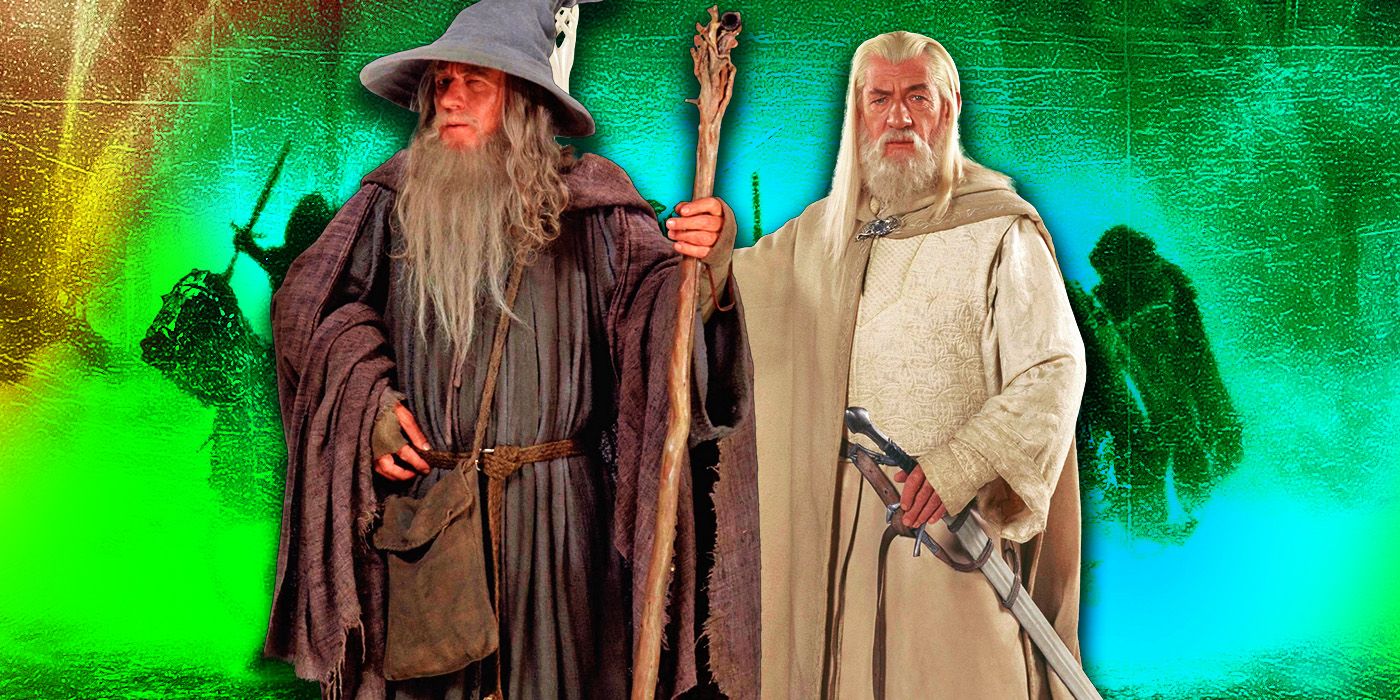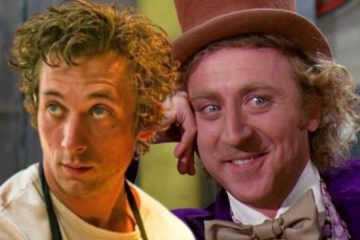In Peter Jackson’s 2002 adaptation of J.R.R. Tolkien’s The Lord of the Rings: The Two Towers, the second installment in The Lord of the Rings trilogy, Gandalf the Grey returns as Gandalf the White. Gandalf had previously been seen by his companions in The Fellowship of the Ring falling to his doom with a demon of the ancient world, a Balrog, deep in the Mines of Moria. His return was a surprise to his cohorts as well as first-time readers and audiences.
While the books might go into great detail as to how Gandalf was able to make his immaculate resurrection from the dead, Jackson did not spend more than a few minutes of screen time addressing this feat. This quick summary was effective for how much time the movies had to address such a huge event for Gandalf’s character reasonably, but it still leaves a lot of questions. The wizards play a much larger role in protecting Middle-earth than is ever fully explained in the films. Because Tolkien’s wizards are more than simply wielders of magic, as in so many other fantasy epics, their history may have been brushed over thus far in cinematic adaptations. Especially in addressing Gandalf’s transformation into Gandalf the White.
Unlike in the Harry Potter series, where wizards could simply be defined as magically gifted members of the human race, the wizards of Middle-earth are spiritual beings manifesting in a human-like form. Amazon’s Rings of Power heavily hints that the wizards of Middle-earth, also known as the Istari, first arrived in the Second Age. However, this could be disputed in referencing Tolkien’s works. For reference, The Lord of the Rings takes place in the Third Age of Middle-earth’s timeline. There were five Istari in the Order of Wizards: Saruman the White, Gandalf the Grey, Radagast the Brown, and Alatar and Pallando — the Blue Wizards.
In Peter Jackson’s 2002 adaptation of J.R.R. Tolkien’s The Lord of the Rings: The Two Towers, the second installment in The Lord of the Rings trilogy, Gandalf the Grey returns as Gandalf the White. Gandalf had previously been seen by his companions in The Fellowship of the Ring falling to his doom with a demon of the ancient world, a Balrog, deep in the Mines of Moria. His return was a surprise to his cohorts as well as first-time readers and audiences.
While the books might go into great detail as to how Gandalf was able to make his immaculate resurrection from the dead, Jackson did not spend more than a few minutes of screen time addressing this feat. This quick summary was effective for how much time the movies had to address such a huge event for Gandalf’s character reasonably, but it still leaves a lot of questions. The wizards play a much larger role in protecting Middle-earth than is ever fully explained in the films. Because Tolkien’s wizards are more than simply wielders of magic, as in so many other fantasy epics, their history may have been brushed over thus far in cinematic adaptations. Especially in addressing Gandalf’s transformation into Gandalf the White.
Unlike in the Harry Potter series, where wizards could simply be defined as magically gifted members of the human race, the wizards of Middle-earth are spiritual beings manifesting in a human-like form. Amazon’s Rings of Power heavily hints that the wizards of Middle-earth, also known as the Istari, first arrived in the Second Age. However, this could be disputed in referencing Tolkien’s works. For reference, The Lord of the Rings takes place in the Third Age of Middle-earth’s timeline. There were five Istari in the Order of Wizards: Saruman the White, Gandalf the Grey, Radagast the Brown, and Alatar and Pallando — the Blue Wizards.
#Gandalf #White #Lord #Rings #Towers
Note:- (Not all news on the site expresses the point of view of the site, but we transmit this news automatically and translate it through programmatic technology on the site and not from a human editor. The content is auto-generated from a syndicated feed.))



